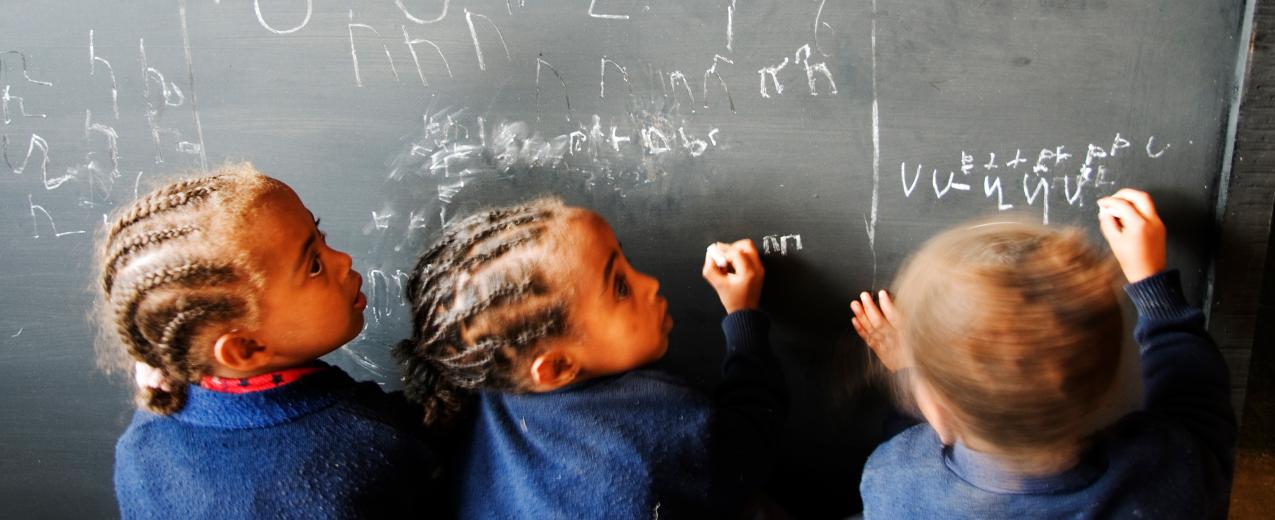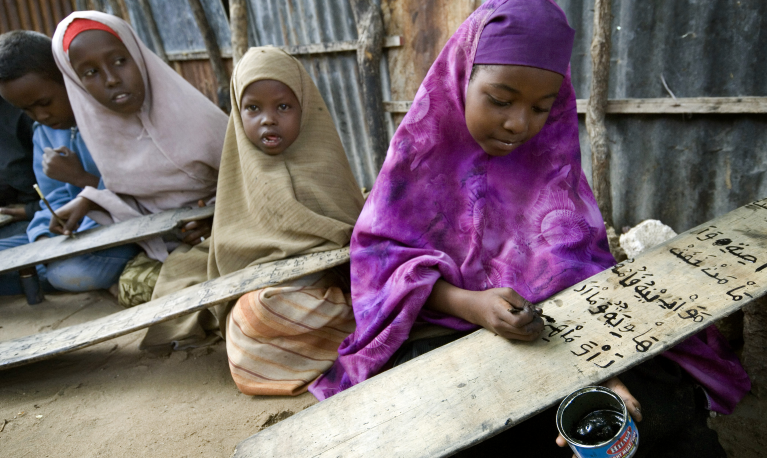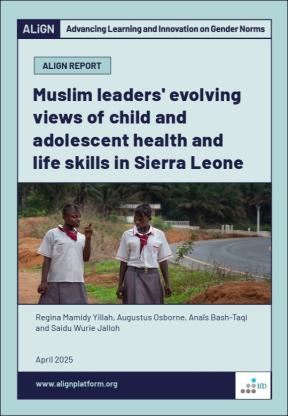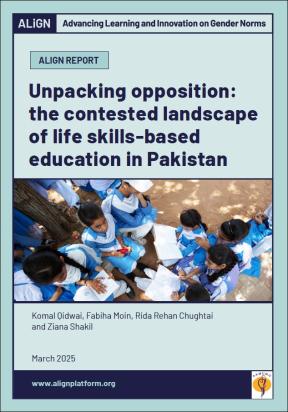
- Blog
- 13 mars 2019
Tackling gender norms offers hope for girls’ education in low- and middle-income countries
- Author: Catherine Jere
- Published by: ALIGN
A new ALIGN policy brief outlining evidence from the DFID Girls’ Education Challenge (GEC) fund argues that norm change may be difficult and time-consuming, but engaging with communities, teachers and young people can ease the impact of discriminatory gender norms and improve learning among marginalised girls in low- and middle-income countries.
Gender norms affect girls in many ways, and often limit their ability to enrol, attend and do well in school. These norms – and associated discriminatory practices – are among the greatest barriers to gender equality in education in low- and middle-income countries.

Even if they are enrolled in school, gendered household responsibilities, care-giving and work outside the home all present barriers to their attendance and learning. Girls in poor, rural settings are often responsible for fetching water or firewood, and these time-consuming activities severely limit their opportunities to attend school or study. In countries such as Afghanistan, Somalia and South Sudan, conflict and extreme poverty exacerbate parents’ reluctance to send their girls to school.
Within schools, teacher bias, harassment and gender-based violence, combined with a ‘hidden curriculum’ that undermines their place in the classroom, only add to the constraints on their full and equitable participation in education. Girls were reported to feel uncomfortable speaking up in front of boys and male teachers, for example. This lack of confidence, poor motivation and low aspirations reflect and reinforce negative stereotypes of girls’ learning.
What works?

A focus on community dialogue can also have important knock-on effects for equitable learning. The Link Community Development Ethiopia (LCDE) project reported a reduction in teachers who prioritised boys’ learning over girls’ – a reduction attributed largely to female teachers in project schools who benefited from wider norm change in communities.
The creation of girls’ clubs has made it easier for girls to talk about their problems, especially around pregnancy, marriage or abuse. In Kenya and South Sudan, older women counselled girls on marriage and pregnancy, and followed up with absentee girls to encourage them to return to school.
Engaging role models and mentors, such as female teachers and community mobilisers, has helped to change perceptions of what girls can do and achieve, and improve their own motivation and aspirations. In Afghanistan and Nepal, peer mentoring and academic support gave marginalised girls the confidence to ask questions in class, including in front of boys. Evaluations reported significant improvements in numeracy and literacy for girls with mentors.
Teachers play a central role in tackling gender norms in schools. During the Discovery project in Ghana, Kenya and Nigeria, training in gender-sensitive methods resulted in teachers not only starting to use gender-equitable language and learning materials, but also assigning classroom duties equally to boys and girls. These changes in teacher behaviour and classroom practices were, in turn, associated with higher learning scores for girls.
Gender norms are slow to change, so continued reinforcement is key

A coordinated, multi-layered approach works best
The ALIGN policy brief outlines recommendations for projects working to change gender norms around girls’ education.
- Seek buy-in from multiple stakeholders at all levels and across communities, schools and peer groups.
- Identify and map out how contextual factors, such as conflict and economic shocks, interact with gender norms, and consider their implications for the education for girls (and boys) of all ages.
- Engage, train and support teachers to understand how discriminatory gender norms and attitudes are reproduced in classrooms, and to adopt gender-sensitive teaching methods.
- Strengthen school-based factors that enable learning and gender norm change, including positive leadership, ongoing teacher education, improved quality of school facilities and materials, and recourse to safe and supportive learning environments.
About the author
This blog was written by Dr. Catherine Jere, who peer-reviewed the policy brief produced by Sophie Amili and Isabella Di Paolo. Sophie and Isabella are Evaluation Consultants working in Coffey International Development Europe’s Evaluation and Research Practice. The Practice comprises 30 specialists who design and deliver high-quality research and evaluation studies for a range of public and private clients. For more information, please contact Sophie Amili, or visit coffeyeurope.com, or follow Coffey on Twitter.
Have your say...
Briefing paper
19 mars 2019

Report
14 avril 2025

Report
26 mars 2025
